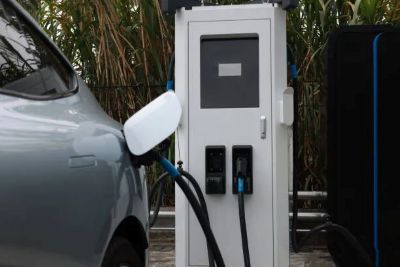


Understanding DC EV Charging Piles: The Future of Fast Electric Vehicle Charging
As electric vehicles (EVs) rapidly gain popularity worldwide, the infrastructure supporting them must evolve just as quickly. One of the most critical components in this ecosystem is the DC EV charging pile—a high-powered charging solution designed to dramatically reduce EV battery recharge times. Unlike the AC chargers typically used at home, DC charging piles are built for public spaces where fast, reliable charging is essential.
This article explores what DC EV charging piles are, how they work, their advantages, and the future trends shaping their development.
A DC EV charging pile is a dedicated charging unit that supplies direct current (DC) directly to an EV’s battery. Unlike AC chargers—which send alternating current to the vehicle’s onboard charger for conversion into DC—DC chargers handle this conversion themselves. This allows them to deliver much higher voltages and currents, enabling rapid charging.
You’ll find DC charging piles mostly at public charging stations, highway rest stops, commercial centers, and fleet depots. They are indispensable for EV users needing quick refills during long trips or for operations requiring fast turnaround times, such as taxi or delivery fleets.
A DC charging system is a complex integration of hardware and software components that deliver safe, high-speed electricity from the grid to an EV. Its main parts include:
This is the user-facing unit featuring the connector, screen, controls, and payment interface. It supplies high-voltage DC power compatible with EV charging standards like CCS (Combined Charging System), CHAdeMO, or GB/T, depending on the region.
This converts grid AC power to high-voltage DC through rectifiers and power electronics. It manages voltage, current, temperature, and overall charging safety. Advanced systems include diagnostics and fault detection to prevent issues like overheating or overcharging.
Through protocols like ISO 15118 or OCPP, the charger and vehicle exchange data about battery status, charging levels, and current limits. This ensures optimal power management, accurate billing, and user authentication. Operators can remotely monitor, control, and update chargers via cloud platforms.
While these terms are often used interchangeably, they have distinct meanings:
Charging Pile: A single charging unit that delivers power to one vehicle at a time.
Charging Station: A facility containing multiple charging piles, sometimes accompanied by amenities like rest areas or convenience stores.
In essence, a charging station is a collection of charging piles managed as a network.
Ultra-Fast Charging: Power outputs range from 50 kW to over 350 kW, allowing an 80% battery recharge in 15–30 minutes, reducing “range anxiety” and enabling longer trips.
Enhanced User Experience: User-friendly interfaces, digital displays, app-based reservations, RFID or QR payments make charging easy and convenient.
Smart Energy Management: Features like load balancing, peak shaving, and renewable energy integration promote sustainable operations.
Revenue Generation: Operators benefit from charging fees, digital ads, and value-added services.
DC charging piles serve diverse applications:
Highway Service Areas: For fast refueling on long journeys.
Urban Charging Hubs: Serving high-density EV populations.
Fleet Charging: Supporting continuous operation for logistics and ride-hailing.
Retail and Hospitality: Attracting customers and adding brand value.
Public Transport Depots: Ensuring timely bus and shuttle services.
High Installation Costs: Electrical upgrades and infrastructure work require significant investment.
Grid Impact: High power demand stresses local grids; battery storage and smart grid tech help mitigate this.
Compatibility Issues: Not all EVs support ultra-fast DC charging, so standards and vehicle capabilities must align.
Maintenance: Complex systems need regular upkeep and remote monitoring.
The demand for DC charging piles is expected to grow sharply, driven by expanding EV adoption and stricter emissions policies. Emerging trends include:
Renewable Energy Integration: Solar-powered charging and energy storage systems.
Vehicle-to-Grid (V2G): Bi-directional charging that feeds energy back to the grid during peak demand.
Modular Designs: Easier scaling and maintenance.
AI Optimization: Predictive power management and maintenance scheduling.
Government Incentives: Subsidies and policies accelerating deployment.
DC EV charging piles are vital to the transition toward sustainable transportation. They offer fast, reliable, and accessible charging essential for expanding EV use worldwide. Whether you’re an EV owner, fleet operator, or investor, understanding DC charging technology is key to embracing the electric future.
By adopting and advancing DC charging infrastructure, we move closer to a cleaner, smarter, and electrified world.Know more about Google SEO Directory
